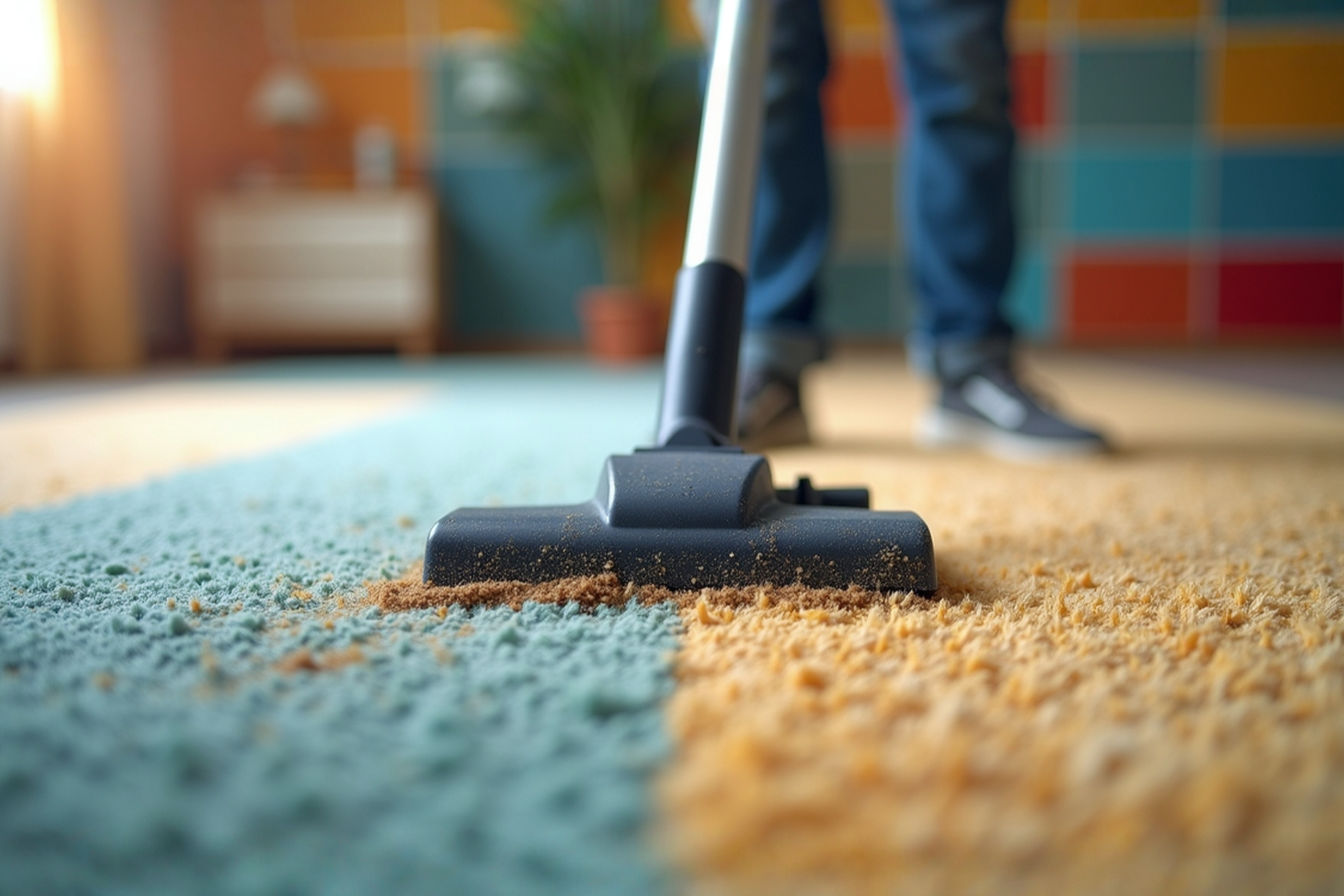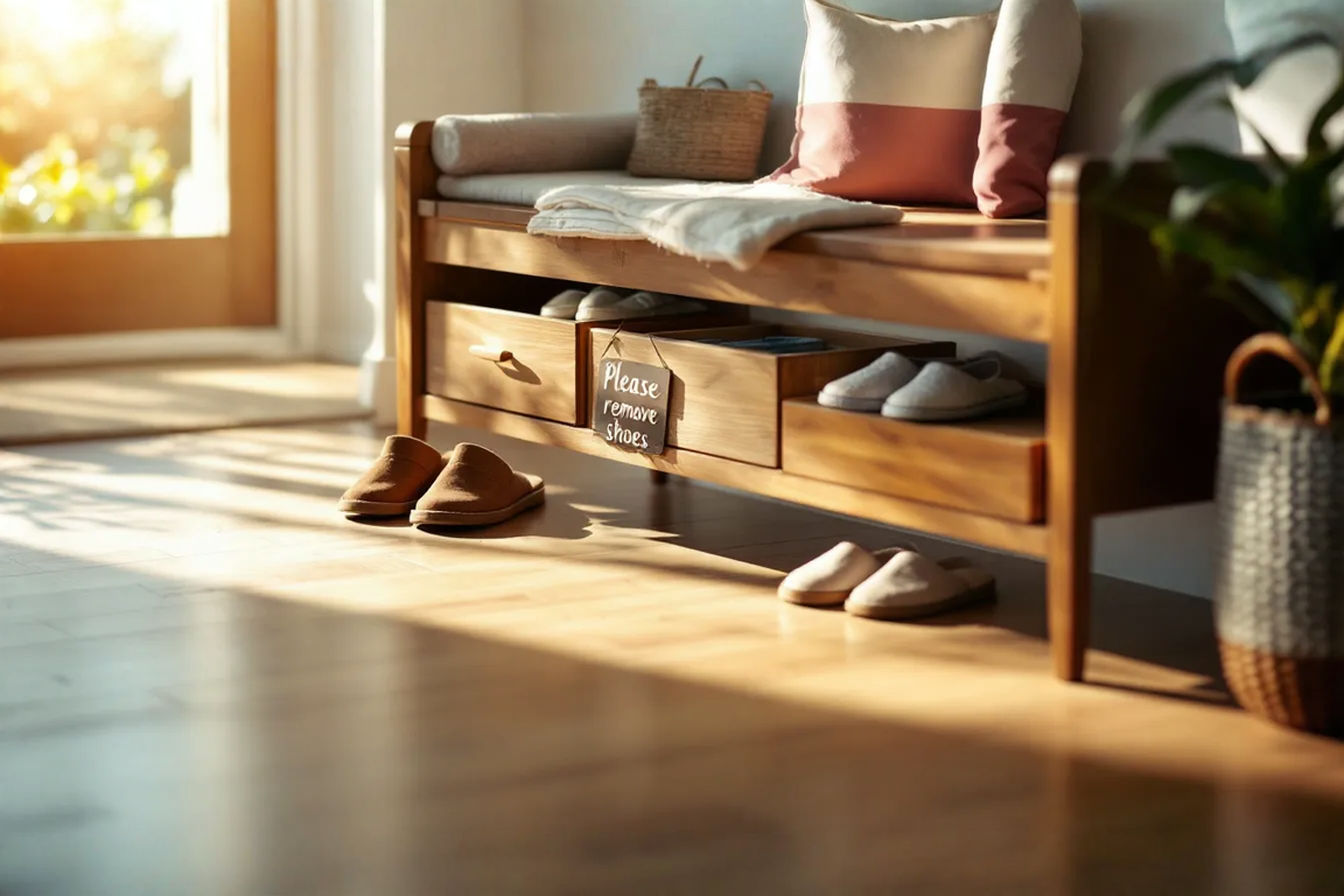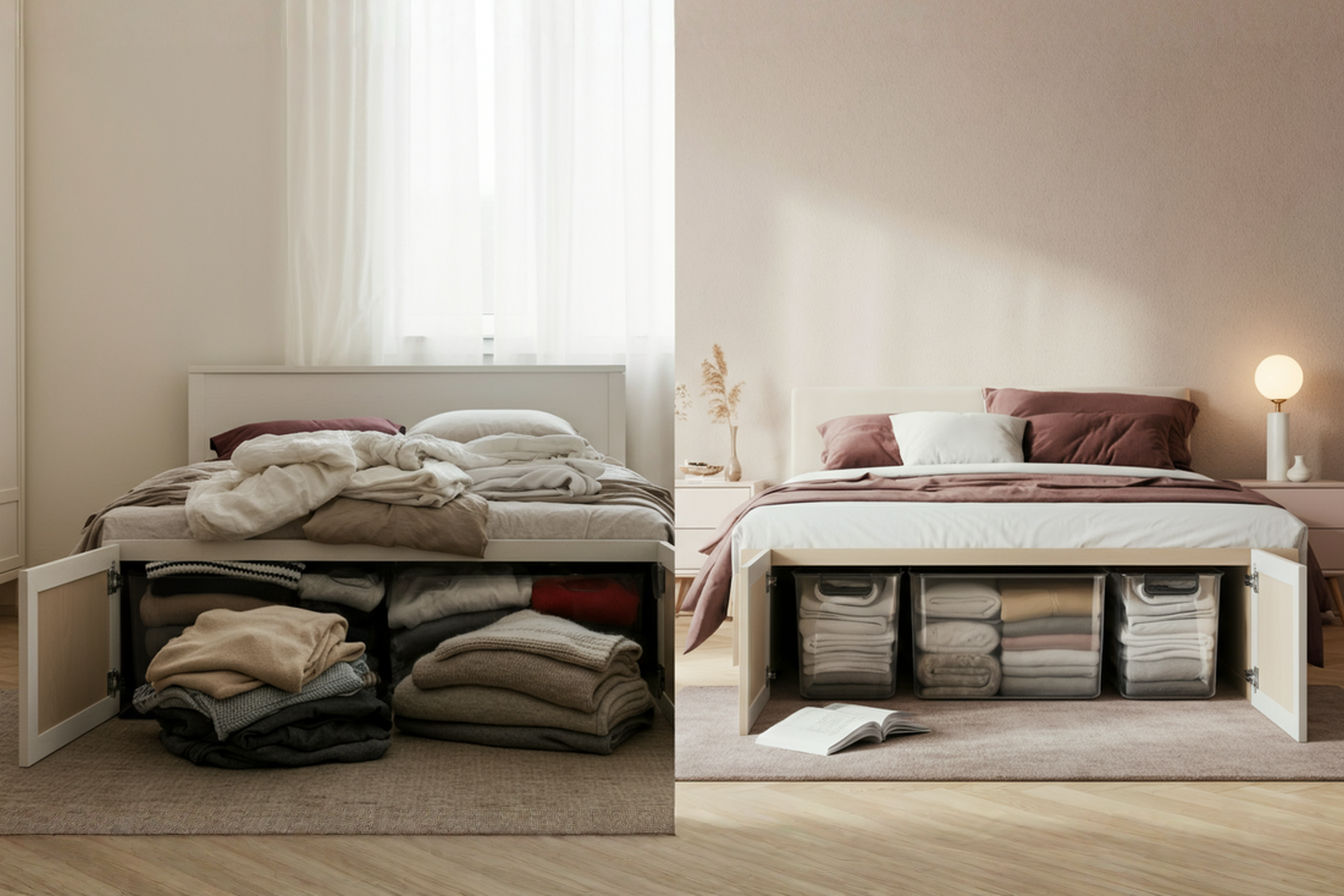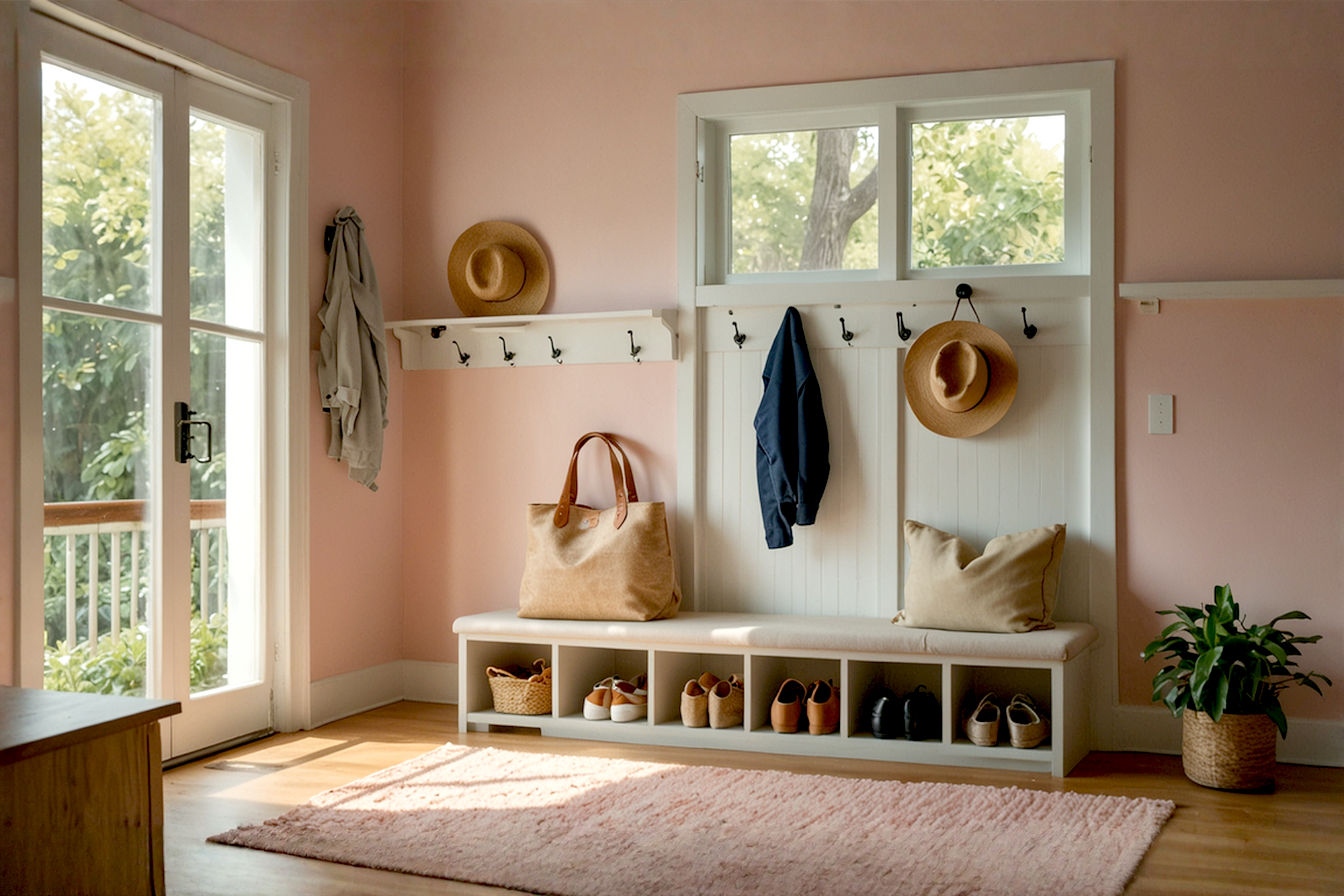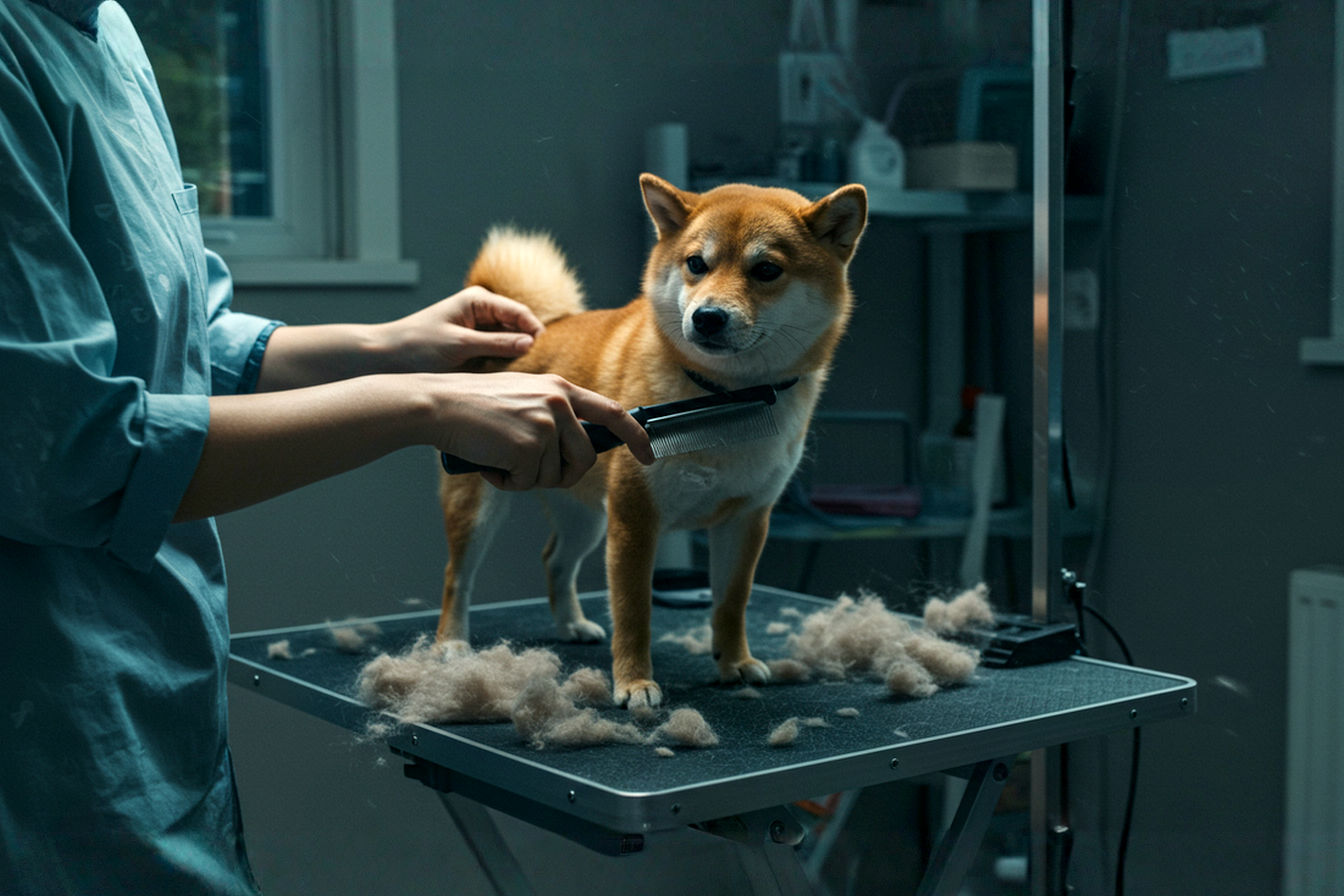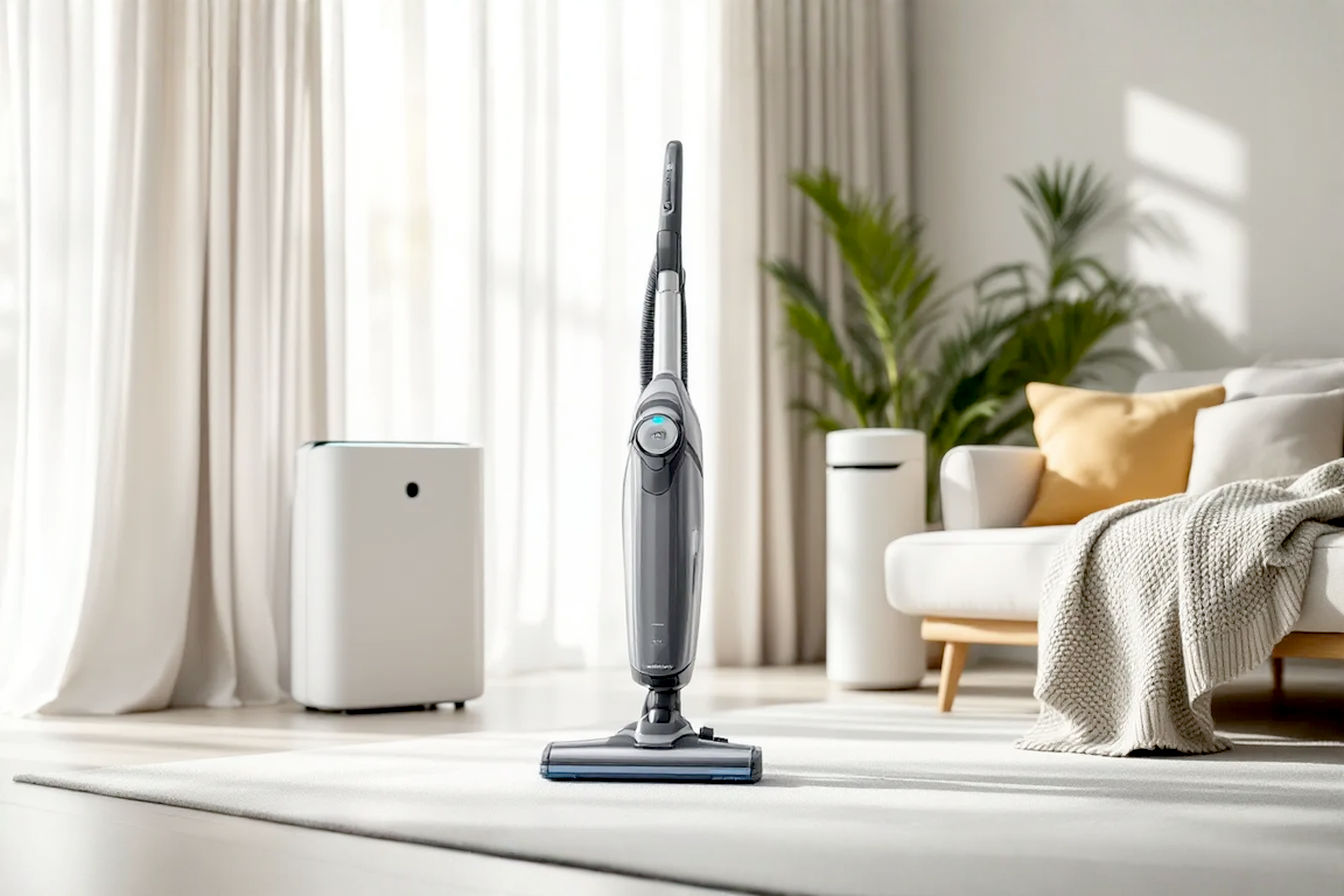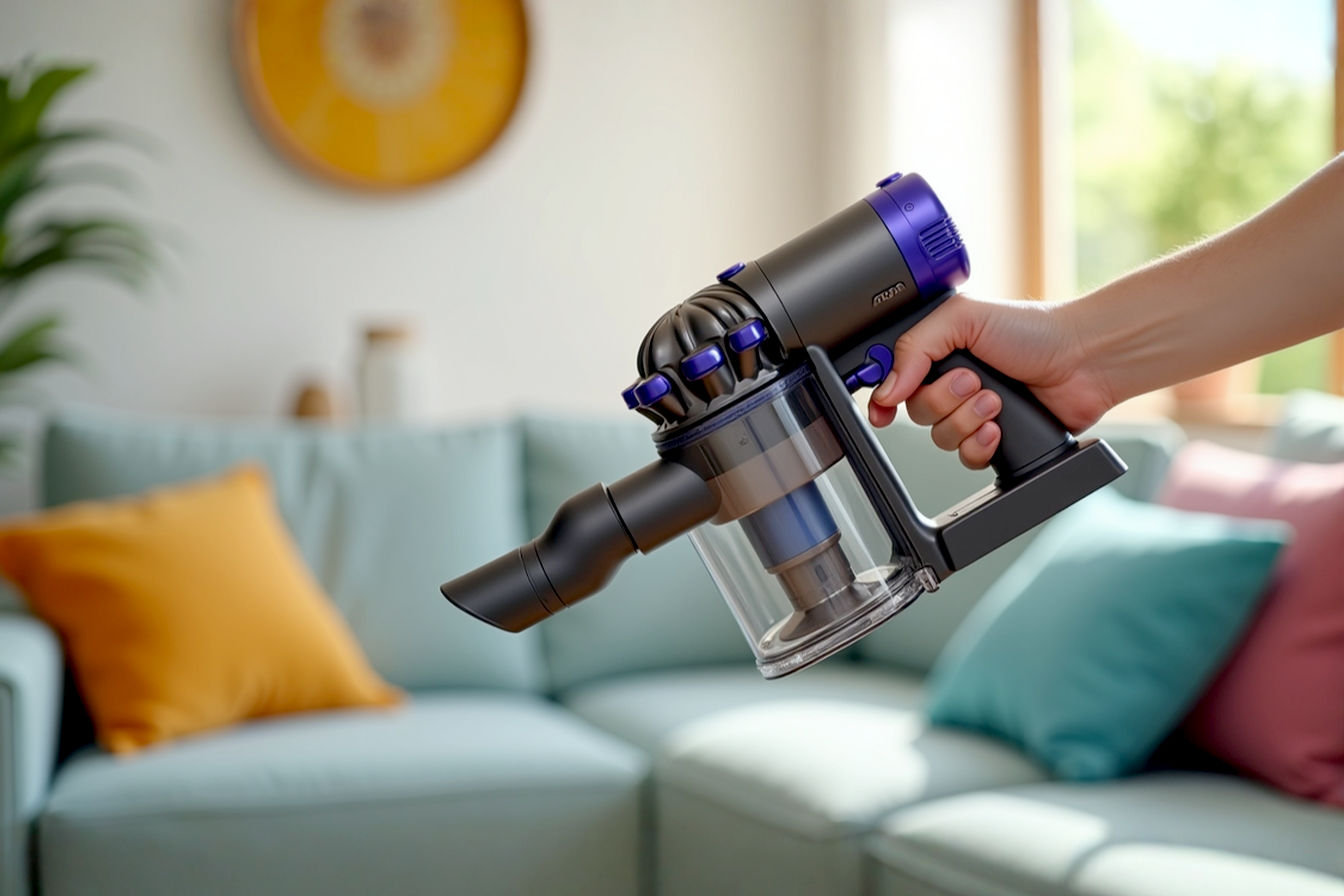Textile Selection for Easier Vacuum Cleaning: The Ultimate Guide to Fabrics and Rugs That Release Dirt Easily
The secret to effortless cleaning isn’t just about your vacuum—it’s about what you’re vacuuming. Learn which textiles naturally repel dirt and make your cleaning routine dramatically easier.
This post may contain affiliate links. If you make a purchase through these links, we may earn a commission at no additional cost to you.
Have you ever spent what feels like an eternity vacuuming, only to find that your carpet or upholstery still looks dirty? You’re not alone. The secret to more effective vacuuming isn’t just about having the latest vacuum model—it’s about what you’re vacuuming in the first place.
The textiles in your home—from carpets and area rugs to upholstered furniture—play a crucial role in how easy or difficult your cleaning routine becomes. Some fabrics are naturally designed to release dirt and debris, while others seem to grip onto every particle with surprising tenacity.
In this comprehensive guide, we’ll explore how different textiles interact with dirt, which materials are most vacuum-friendly, and how to make strategic choices for every area of your home. Whether you’re building a new home, redecorating, or simply looking to understand why some areas are harder to clean than others, this information will help you create a cleaner living environment with less effort.
Understanding How Fabrics Interact with Dirt
Before diving into specific materials, it’s important to understand the relationship between textiles and dirt. This knowledge forms the foundation for making smarter cleaning decisions.
The Science of Soil Adhesion
Dirt doesn’t just sit on top of fabrics—it interacts with them on a molecular level. Soil adhesion refers to the physical and chemical forces that cause dirt particles to stick to fibers. These include:
- Mechanical entrapment: When dirt particles become physically wedged between fibers or in the weave structure
- Electrostatic attraction: The natural static electricity that develops between dirt particles and certain fibers
- Hydrogen bonding: Chemical bonds that form between soil molecules and fiber surfaces
- Van der Waals forces: Weak molecular attractions that occur between dirt and fiber surfaces
Different textiles exhibit different levels of these interactions, which directly impacts how easily they release dirt during vacuuming.
Key Factors Affecting Dirt Release
Several factors determine how readily fabrics will surrender their dirt to your vacuum:
- Fiber structure: Smooth fibers generally release dirt more easily than rough or textured ones
- Fiber composition: Synthetic fibers typically release dirt better than natural fibers
- Textile construction: Tighter weaves and denser constructions often trap more dirt
- Surface treatments: Many modern textiles have special finishes that enhance dirt release
- Moisture content: Slightly damp fibers can hold dirt more stubbornly than dry ones
How Vacuum Cleaners Work with Different Textiles
Vacuum cleaners operate by creating suction that lifts dirt away from surfaces. However, this process varies significantly across different textile types:
- Hard-surface textiles (like flat-weave rugs) allow for direct suction contact, making dirt removal straightforward
- Low-pile fabrics permit good airflow and suction with minimal resistance
- High-pile or plush fabrics create air resistance that can reduce suction effectiveness
- Textured fabrics may create irregular surfaces that prevent complete suction contact
Understanding these dynamics helps explain why some textiles seem perpetually dirty despite regular vacuuming.
Carpet Materials and Their Vacuum-Friendliness
The material your carpet is made from significantly impacts how easily it releases dirt. Let’s explore the most common options and their cleaning characteristics.
Synthetic Carpet Fibers
Synthetic fibers dominate the carpet market today, and for good reason—they generally outperform natural fibers in terms of dirt release and maintenance ease.
Nylon: The Durable Classic
Nylon remains the most popular carpet fiber, accounting for approximately 60% of the residential carpet market. Its cleaning characteristics include:
- Dirt release: Good to excellent when properly treated
- Stain resistance: Moderate naturally, but excellent with treatments
- Static control: Moderate, can be improved with antistatic treatments
- Durability: Excellent—withstands repeated vacuuming without fiber damage
Nylon’s molecular structure creates a relatively smooth surface that dirt can’t adhere to strongly. Higher-quality nylon carpets (often labeled as “Type 6,6” or “premium nylon”) generally release dirt more effectively than budget options.
Polyester: The Stain Fighter
Polyester carpets have gained popularity for their excellent stain resistance and lower cost:
- Dirt release: Good, especially in short pile constructions
- Stain resistance: Excellent—inherently resistant to water-based stains
- Static control: Very good
- Durability: Moderate—can crush under heavy furniture or traffic
Polyester’s hydrophobic (water-repelling) nature means it doesn’t absorb moisture-based stains easily, which also helps prevent dirt from bonding deeply with the fibers. However, polyester can attract and hold oily soils, making regular vacuuming essential.
Olefin/Polypropylene: The Budget-Friendly Option
Olefin (polypropylene) offers excellent value and specific cleaning advantages:
- Dirt release: Very good for dry soils, less effective for oily dirt
- Stain resistance: Excellent against water-based stains
- Static control: Excellent
- Durability: Good in low-pile constructions, fair in higher piles
The structure of olefin fibers creates a surface that dry dirt particles struggle to adhere to, making vacuuming particularly effective. However, these fibers can attract and hold oily soils, which may require deeper cleaning methods beyond vacuuming.
Triexta: The Newcomer
Triexta (also known by the brand name Sorona) is a newer synthetic fiber gaining traction in the carpet industry:
- Dirt release: Excellent
- Stain resistance: Superior—inherent stain resistance without treatments
- Static control: Very good
- Durability: Excellent—maintains appearance under heavy use
Triexta combines the durability of nylon with enhanced stain and soil resistance. Its molecular structure creates a remarkably smooth surface that dirt particles struggle to bond with, making vacuum cleaning particularly effective.
Natural Carpet Fibers
Natural fibers offer aesthetic and environmental benefits but generally require more maintenance than synthetic alternatives.
Wool: The Premium Choice
Wool has been used in carpets for centuries and offers a unique combination of luxury and functionality:
- Dirt release: Moderate—requires stronger suction
- Stain resistance: Good natural resistance to water-based stains
- Static control: Excellent
- Durability: Outstanding when properly maintained
Wool fibers have tiny scales on their surface that can trap dirt particles, making effective vacuuming more challenging. However, these same scales prevent dirt from penetrating deeply into the fiber, meaning that with sufficient suction, wool carpets can be kept quite clean.
Cotton: The Comfort Option
Cotton carpets are less common but offer a soft, natural alternative:
- Dirt release: Poor to moderate
- Stain resistance: Poor unless heavily treated
- Static control: Good
- Durability: Fair—shows wear relatively quickly
Cotton’s highly absorbent nature means it readily accepts and holds both moisture and dirt, making it among the more challenging fibers to keep clean through vacuuming alone. Regular, thorough vacuuming is essential for cotton carpets.
Silk: The Luxury Choice
Silk carpets represent the height of luxury but come with significant maintenance challenges:
- Dirt release: Poor
- Stain resistance: Poor
- Static control: Moderate
- Durability: Delicate—requires specialized care
Silk fibers have a natural affinity for dirt particles and can be easily damaged by aggressive vacuuming. For this reason, silk carpets are generally not recommended for high-traffic areas or homes focused on minimal maintenance.
Plant-Based Fibers: The Natural Alternative
Sisal, jute, seagrass, and other plant-based fibers offer distinct texture and environmental benefits:
- Dirt release: Fair to good for dry dirt, poor for stains
- Stain resistance: Poor—highly absorbent
- Static control: Excellent
- Durability: Varies by fiber type
Plant-based fibers have naturally textured surfaces that can trap dirt in their structured weaves. However, their generally firm texture means that surface dirt doesn’t penetrate deeply and can be removed with appropriate vacuum attachments.
Comparative Chart: Fiber Types and Vacuum-Friendliness
| Fiber Type | Dirt Release Rating | Best Vacuum Type | Special Considerations |
|---|---|---|---|
| Nylon | 8/10 | Standard upright with brush roll | Benefits from annual deep cleaning |
| Polyester | 7/10 | Standard upright | Avoid oil-based stains |
| Olefin | 8/10 | Standard upright | May need deeper cleaning for oily soils |
| Triexta | 9/10 | Any quality vacuum | Minimal special care needed |
| Wool | 6/10 | Adjustable suction with gentle brush | Avoid beater bars on delicate wool |
| Cotton | 5/10 | High-suction vacuum | Requires frequent cleaning |
| Silk | 3/10 | Suction-only, no brush | Professional cleaning recommended |
| Sisal/Jute | 6/10 | Strong suction with appropriate attachment | Avoid excess moisture |
Carpet and Rug Construction for Easier Cleaning
Beyond material choice, how a carpet or rug is constructed dramatically affects how easily it releases dirt during vacuuming.
Pile Height and Its Impact
The length of the fibers extending upward from the carpet backing (known as pile height) significantly influences cleaning effectiveness:
Low Pile (under 1/4 inch)
- Vacuum effectiveness: Excellent—allows for maximum suction contact
- Dirt visibility: More visible on surface, less hidden in fibers
- Maintenance level: Low—quick, effective vacuuming
- Best for: High-traffic areas, homes with allergy sufferers, minimalist aesthetics
Low-pile carpets like Berber, commercial-grade, and many indoor/outdoor options provide minimal space for dirt to hide. The direct contact between vacuum head and carpet surface creates optimal suction conditions, making these the easiest floor coverings to keep clean.
Medium Pile (1/4 to 1/2 inch)
- Vacuum effectiveness: Good—balances comfort and cleanability
- Dirt visibility: Moderate—some dirt can settle deeper into pile
- Maintenance level: Moderate—regular vacuuming required
- Best for: Family rooms, bedrooms, balanced comfort and maintenance
Medium-pile carpets represent the most common residential choice, balancing comfort underfoot with reasonable maintenance requirements. These carpets benefit from vacuums with adjustable height settings to optimize suction contact.
High Pile (over 1/2 inch)
- Vacuum effectiveness: Fair to challenging—dirt can hide deep in fibers
- Dirt visibility: Low—significant dirt can accumulate before becoming visible
- Maintenance level: High—requires powerful vacuums and frequent cleaning
- Best for: Low-traffic areas, bedroom spaces, comfort-focused rooms
High-pile carpets, including shag and frieze styles, prioritize comfort and aesthetics over easy maintenance. These carpets require vacuums specifically designed for deep pile, with adjustable heads and strong suction to pull dirt from deep within the fibers.
Pile Density Considerations
Density refers to how tightly packed the fibers are within a carpet:
- High-density carpets: Tightly packed fibers prevent dirt from penetrating deeply, keeping it near the surface where vacuums can reach it
- Low-density carpets: More space between fibers allows dirt to settle deeper, making thorough vacuuming more challenging
When selecting for ease of cleaning, higher density generally translates to easier maintenance, particularly in medium and higher pile carpets.
Loop vs. Cut Pile Construction
The way carpet fibers are attached to the backing creates different cleaning profiles:
Loop Pile
- Examples: Berber, level loop, multi-level loop
- Cleaning characteristics: Generally excellent—dirt tends to stay near the surface
- Vacuum considerations: Avoid beater bars that can snag loops; suction-focused cleaning works best
Loop pile constructions feature uncut yarn loops, creating a surface that resists dirt penetration. This construction is inherently more vacuum-friendly because dirt particles remain closer to the surface where suction can effectively remove them.
Cut Pile
- Examples: Plush, saxony, frieze, textured
- Cleaning characteristics: Varies based on height and density—generally more challenging than loop pile
- Vacuum considerations: Benefit from brush action to release trapped dirt
Cut pile carpets feature fibers that have been cut at the tips, creating individual strands rather than loops. This construction generally allows more dirt penetration, though high-density cut pile options can still perform well.
Rug Construction Types
Area rugs offer additional construction considerations:
- Flat weave rugs (like dhurries and kilims): Minimal pile height creates excellent vacuum cleaning conditions
- Hand-knotted rugs: Variable pile heights with dense construction; generally respond well to gentle vacuuming
- Tufted rugs: Machine-made with fibers inserted into a backing; cleaning effectiveness varies with pile height
- Hooked rugs: Similar to loop pile carpets; generally effective with appropriate vacuum techniques
Backing Materials and Their Impact
The material used for the underside of carpets and rugs affects both dirt collection and cleaning:
- Jute/natural fiber backings: More breathable but can shed and deteriorate over time
- Synthetic backings: Generally more stable but may create a less breathable environment
- Attached cushion backings: Can create a springier feel but may collect more dirt at the base of fibers
- Rug pads: Create space for dirt to filter through but improve overall rug life
Upholstery Fabrics That Release Dirt Easily
Beyond floor coverings, upholstered furniture represents a significant cleaning challenge in most homes. Selecting the right upholstery fabrics can dramatically reduce maintenance needs.
Performance Fabrics: The New Standard
Recent technological advances have created “performance fabrics” specifically engineered for easy cleaning:
- Examples: Crypton, Sunbrella, Revolution, Ultrasuede
- Composition: Typically synthetic fibers with integrated stain and soil resistance
- Cleaning profile: Superior—many allow complete cleaning with water alone
- Vacuum effectiveness: Excellent—dirt remains on surface for easy removal
Performance fabrics have revolutionized upholstery cleaning by incorporating stain and soil resistance at the molecular level rather than as a surface treatment. This means their cleaning benefits won’t wear off over time.
Synthetic Upholstery Options
Even without performance fabric branding, many synthetic options offer excellent cleaning characteristics:
Microfiber/Microsuede
- Composition: Typically polyester or nylon fibers that are finer than silk
- Dirt release: Excellent—tight weave prevents deep penetration
- Vacuum effectiveness: Very good—responds well to standard upholstery attachments
- Special considerations: Attracts and shows lint; benefits from regular light vacuuming
The incredibly tight weave of microfiber creates a surface that dirt struggles to penetrate, keeping soil near the surface where vacuums can effectively remove it.
Polyester Blends
- Composition: Often blended with cotton or other fibers for improved feel
- Dirt release: Good—especially in tighter weaves
- Vacuum effectiveness: Good with appropriate attachments
- Special considerations: Quality varies widely; higher-end options generally clean better
Polyester’s naturally smooth fiber surface resists dirt adhesion, making it a practical choice for furniture that receives regular use.
Nylon Blends
- Composition: Often combined with other fibers for improved texture
- Dirt release: Very good—especially in commercial-grade fabrics
- Vacuum effectiveness: Excellent with appropriate suction
- Special considerations: More expensive than polyester but offers superior durability
Nylon’s resilience makes it ideal for high-use furniture, with a surface that releases dirt readily during regular vacuuming.
Natural Fabric Options
Natural fibers present more cleaning challenges but offer aesthetic and comfort benefits:
Cotton
- Dirt release: Fair—improves with treatments
- Vacuum effectiveness: Moderate—may require stronger suction
- Special considerations: Highly absorbent; benefits from soil-resistant treatments
Cotton fabrics, while comfortable and breathable, readily accept and hold dirt. Tighter weaves and treatments can improve performance.
Wool
- Dirt release: Moderate—natural resilience helps
- Vacuum effectiveness: Good with appropriate attachments
- Special considerations: Naturally soil-resistant but can be challenging to clean once stained
Wool’s natural properties provide some soil resistance, but its complex fiber structure can make thorough cleaning more difficult.
Linen
- Dirt release: Poor to fair—varies by weave
- Vacuum effectiveness: Moderate—loose weaves present challenges
- Special considerations: Shows soil quickly; best for low-use furniture
Linen’s natural texture and absorbency make it one of the more challenging fabrics to keep clean through vacuuming alone.
Leather and Alternatives
- Genuine leather: Excellent dirt release—can be wiped clean rather than vacuumed
- Bonded leather: Good initial performance but deteriorates over time
- Faux leather/vinyl: Superior dirt release but may crack or peel eventually
- Leatherette: Combines good cleanability with improved durability
Leather and its alternatives represent the easiest upholstery materials to keep clean, as dirt remains entirely on the surface rather than penetrating into fibers.
Fabric Weaves and Their Impact
Beyond the fiber content, how upholstery fabric is woven significantly affects its cleaning profile:
- Tight weaves (like twill or microfiber): Superior dirt release as particles remain near the surface
- Textured weaves (like bouclé or chenille): More challenging as dirt can hide in the texture
- Loose weaves (like certain linens): Difficult to clean as dirt penetrates deeply
When selecting for easy maintenance, prioritize tighter weaves regardless of fiber content.
Technology and Treatments That Enhance Dirt Release
Modern textile technology offers numerous options to improve the cleaning performance of almost any fabric type.
Soil-Release Treatments
Soil-release treatments use chemical compounds that reduce the bond between dirt and fibers:
- Fluorochemical treatments: Create an invisible barrier that repels both water and oil-based soils
- Silicone-based treatments: Provide water repellency and moderate soil resistance
- Acrylic polymers: Fill in fiber gaps to prevent dirt penetration
These treatments significantly improve vacuum effectiveness by keeping dirt near the surface where suction can reach it.
Stain-Resistant Technologies
While distinct from soil release, stain resistance often improves general cleaning as well:
- Fiber-level treatments: Integrated during manufacturing for longer-lasting protection
- Topical treatments: Applied after production or during cleaning
- Nanotechnology solutions: Microscopic particles that bond with fibers to repel liquids and soils
Many modern carpets and fabrics come with proprietary stain-resistant systems like Scotchgard™, Stainmaster™, or Guard™ technologies.
Antimicrobial Treatments
Keeping textiles free from microorganism growth indirectly improves cleaning effectiveness:
- Silver-ion treatments: Use silver’s natural antimicrobial properties to prevent bacterial growth
- Zinc pyrithione: Controls mildew and fungi that can trap dirt
- Quaternary ammonium compounds: Provide broad-spectrum protection
These treatments prevent the sticky biofilms that can make dirt more difficult to remove through vacuuming.
Factory vs. Aftermarket Applications
Protection can be applied at different stages:
- Factory-applied: Generally more uniform and durable
- Professional aftermarket: Can restore protection to older textiles
- DIY applications: Vary in effectiveness but provide budget options
For optimal performance, factory-applied treatments integrated into the fiber typically outperform later applications.
Strategic Textile Selection for Different Spaces
Different areas of your home have different cleaning needs, and textile selection should reflect these realities.
High-Traffic Areas
Entryways, hallways, stairs, and main living areas see the most foot traffic and should prioritize cleaning ease:
- Best carpet options: Low-pile nylon or triexta with soil-release treatment
- Best rug options: Flat-weave or low-pile synthetic rugs, indoor/outdoor rugs
- Best upholstery: Performance fabrics or leather/leather alternatives
- Special considerations: Consider darker colors or patterns that hide soil between cleanings
High-traffic areas benefit from textiles specifically engineered for soil release, as they’ll need frequent vacuuming to maintain appearance.
Kid-Friendly Spaces
Children’s rooms and play areas face unique challenges:
- Best carpet options: Medium-pile nylon or triexta with strong stain protection
- Best rug options: Washable rugs, modular carpet tiles that can be individually replaced
- Best upholstery: Crypton or similar performance fabric with moisture barrier
- Special considerations: Avoid high-pile options that can trap small toys and debris
Kid-friendly spaces benefit from textiles that balance comfort with outstanding stain resistance and easy cleaning.
Pet-Friendly Options
Homes with pets require special consideration for fur, dander, and occasional accidents:
- Best carpet options: Triexta or solution-dyed nylon with moisture barrier backing
- Best rug options: Indoor/outdoor rugs, synthetic flat weaves
- Best upholstery: Tightly woven synthetics resistant to claw snags
- Special considerations: Avoid loops that can snag on claws; select colors that hide pet hair
Pet owners should prioritize textiles that resist claw damage while repelling fur and allowing easy accident cleanup.
Dining Areas
Dining spaces face food and beverage challenges:
- Best carpet options: Low-pile commercial-grade carpet tiles
- Best rug options: Indoor/outdoor or washable options
- Best upholstery: Crypton or similar moisture-resistant performance fabric
- Special considerations: Dark patterns can hide stains between cleanings
Dining areas benefit most from textiles with liquid-repellent properties and easy spot-cleaning characteristics.
Bedrooms and Low-Traffic Areas
Spaces with less foot traffic allow for more comfort-focused choices:
- Best carpet options: Medium to higher pile with good soil resistance
- Best rug options: Softer, more luxurious options including wool
- Best upholstery: Wider variety of options including natural fibers with treatments
- Special considerations: Still prioritize soil release properties for long-term appearance
Even low-traffic areas benefit from soil-resistant properties to maintain appearance with minimal maintenance.
Maintenance Tips for Maximizing Dirt Release
Even the most vacuum-friendly textiles require proper maintenance techniques to perform at their best.
Vacuum Techniques for Different Textiles
Adjust your approach based on the textile type:
- Low-pile carpets: Straight passes with standard vacuum settings
- High-pile carpets: Higher height setting with multiple passes from different directions
- Delicate rugs: Suction-only attachment without beater bar
- Upholstery: Appropriate attachment with gentle approach
Vacuuming frequency recommendations:
- High-traffic areas: Daily to twice weekly
- Medium-traffic areas: Weekly
- Low-traffic areas: Bi-weekly
- Upholstery: Monthly for regular use furniture
Complementary Cleaning Methods
Vacuuming works best as part of a comprehensive approach:
- Regular professional deep cleaning: Every 12-18 months for most carpets
- Spot treatment: Address spills immediately before they set
- Refreshing treatments: Carpet powders can help release trapped dirt
- Fabric brushes: Can enhance dirt release on some upholstery
Warning Signs That Textiles Need Help
Watch for indications that your current maintenance isn’t sufficient:
- Darkening traffic patterns: Indicates embedded soil
- Reappearing spots: Suggests wicking from deeper stains
- Musty odors: May indicate bacterial growth in fibers
- Texture changes: Can signal embedded dirt affecting fiber structure
Addressing these signs early can prevent permanent damage and restore easier cleaning.
Conclusion
The textiles you choose for your home have a profound impact on how easily you can maintain a clean environment. By selecting fabrics, carpets, and rugs that naturally release dirt more readily, you can significantly reduce your cleaning workload while maintaining a healthier living space.
The most vacuum-friendly options generally include:
- Carpets: Low to medium-pile synthetic fibers (especially nylon and triexta) with soil-release treatments
- Rugs: Flat-weave or low-pile constructions with synthetic fibers
- Upholstery: Performance fabrics, microfiber, or leather/leather alternatives
While more expensive natural fibers like wool offer other benefits, they typically require more maintenance to keep clean. The investment in easier-to-clean textiles pays dividends in time saved and cleaner living spaces.
Remember that even the most vacuum-friendly textiles benefit from regular maintenance and occasional professional cleaning to maintain their dirt-releasing properties. By combining smart textile selection with proper care, you can enjoy both beautiful interiors and minimal cleaning hassle.
Glossary of Textile Terms
- Denier: Measurement of fiber thickness; lower numbers indicate finer fibers
- Face weight: Weight of fiber per square yard; higher numbers indicate more fiber
- Pile: The upright fibers of carpet or fabric
- Twist level: Number of turns per inch in carpet fibers; higher twist generally means better durability
- Solution-dyed: Coloration added during fiber production rather than after, improving stain resistance
- Olefin: Another name for polypropylene fiber
- BCF: Bulked continuous filament; a type of continuous fiber construction
- Staple fiber: Short, spun fibers (as opposed to continuous filament)
- Berber: A loop-pile carpet style originally made of wool but now often made with synthetic fibers
- Frieze: A twisted cut-pile carpet with high twist level
Additional Resources
Recommended Vacuum Types for Specific Textiles
| Textile Type | Recommended Vacuum Features |
|---|---|
| Low-pile synthetic carpet | Standard upright with brush roll |
| High-pile carpet | Adjustable height, high suction power |
| Delicate wool rugs | Suction-only with gentle attachment |
| Hard-surface flooring with area rugs | Convertible vacuum with “hard floor” setting |
| Pet-friendly homes | Specialized pet-hair attachments, HEPA filtration |
When to Consider Professional Cleaning
- After significant spills or stains
- When DIY methods no longer produce satisfactory results
- According to manufacturer warranty requirements (typically every 12-24 months)
- When textiles begin to appear dull despite regular vacuuming
- After illness in the home to remove potential pathogens

